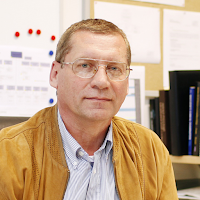Global Experts Highlight Best Practice in Stroke Awareness Campaigns
The World Stroke Organization has announced the winners of their annual awards for best practice in raising awareness of key issues in stroke. The WSO, a worldwide membership body with over 4000 members representing over 100,000 stroke professionals, supporters and survivors. It works to reduce the global burden of stroke and central part of its program is the delivery of an annual World Stroke Day Campaign, World Stroke Day brings together WSO members and stroke stakeholders in a coordinated global day of action to raise awareness of critical issues in stroke.
Last year the theme for World Stroke Day
was ‘Stroke is Treatable’ around 100 campaigns were registered with on the WSO
map of action, almost half of which applied for an award. Submissions were reviewed by WSO Board and Campaign Committee members with winners selected for reducing the impact of stroke by raising awareness of patient treatment needs and the potential for recovery.
Award for Best Campaign in a High Income
Country
Neeman
Stroke Survivors, Israel were selected in the High
Income Country category for their high profile campaign using TV, advertising
viral online campaigning and advocacy events to raise awareness of the signs
and urgent treatment needs of people having a stroke.
The Cheras
Rehabilitation Hospital in Kuala Lumpur Malaysia received an award for best
campaign in a low to middle income country.
The hospital ran a broad ranging program of workshops and events
involving patients, carers, healthcare professionals and local policy makers to
raise awareness of the impact and long term treatment and support needs of
patients and families.
The World Stroke Campaign Award for
outstanding individual achievement was given to MacDonald Oguike for his leadership of the Acha Foundation’s MasterStroke
program that used an impressive combination of media, social media and mobile
technology to raise awareness and understanding of stroke throughout Nigeria.
“Stroke is the second biggest cause of
death and the single biggest cause of disability worldwide. It is crucial that
people recognize the signs of stroke and understand that effective treatment
can saves lives and reduce the devastating impact on individuals, families and
society. Each of the winning campaigns has made a significant contribution
towards the WSO’s vision of a life free from stroke.” said World Stroke
President Werner Hacke.
“Each World Stroke Campaign Award Winner
has worked in coordinated way, not only to make lives better in their own
communities but to support global awareness of stroke. This kind of work is
crucial to ensuring that stroke gets the attention and resources it deserves
and each winner provides examples that we can all learn something from.” said WSO
Campaign Chair Jon Barrick.
For more information about the World Stroke
Campaign and Awards please visit www.worldstrokecampaign.org
or email campaigns@worldstroke.org






